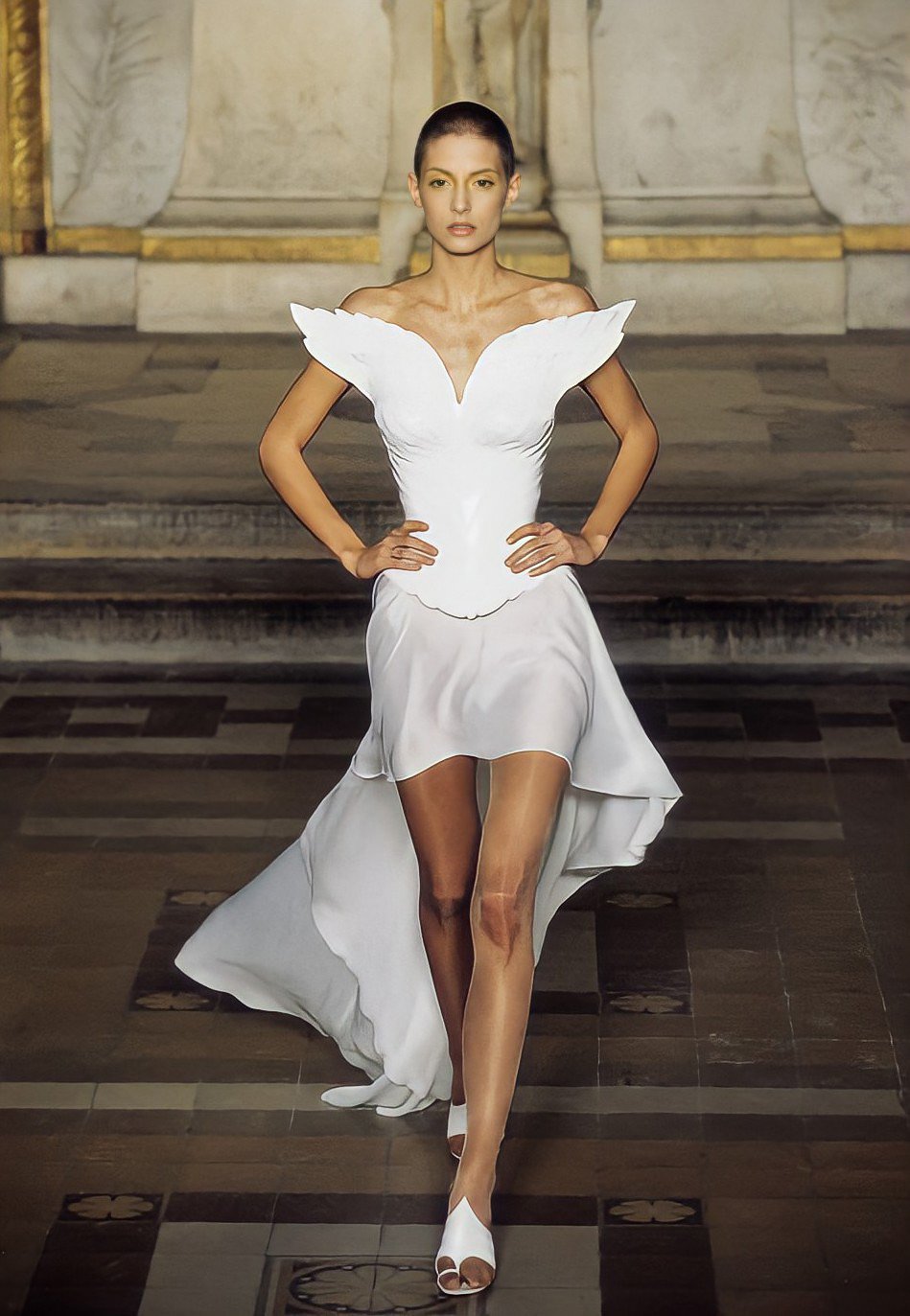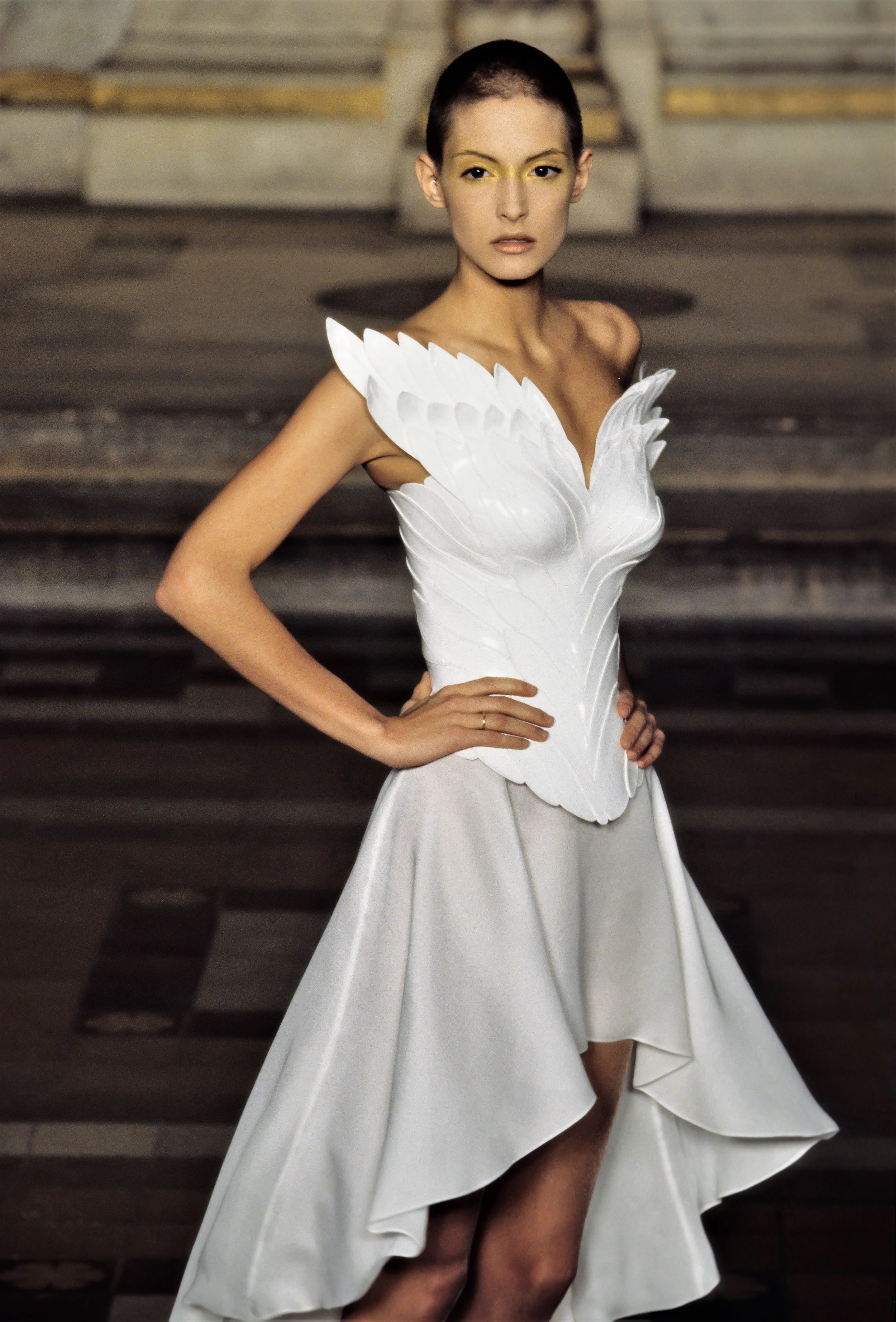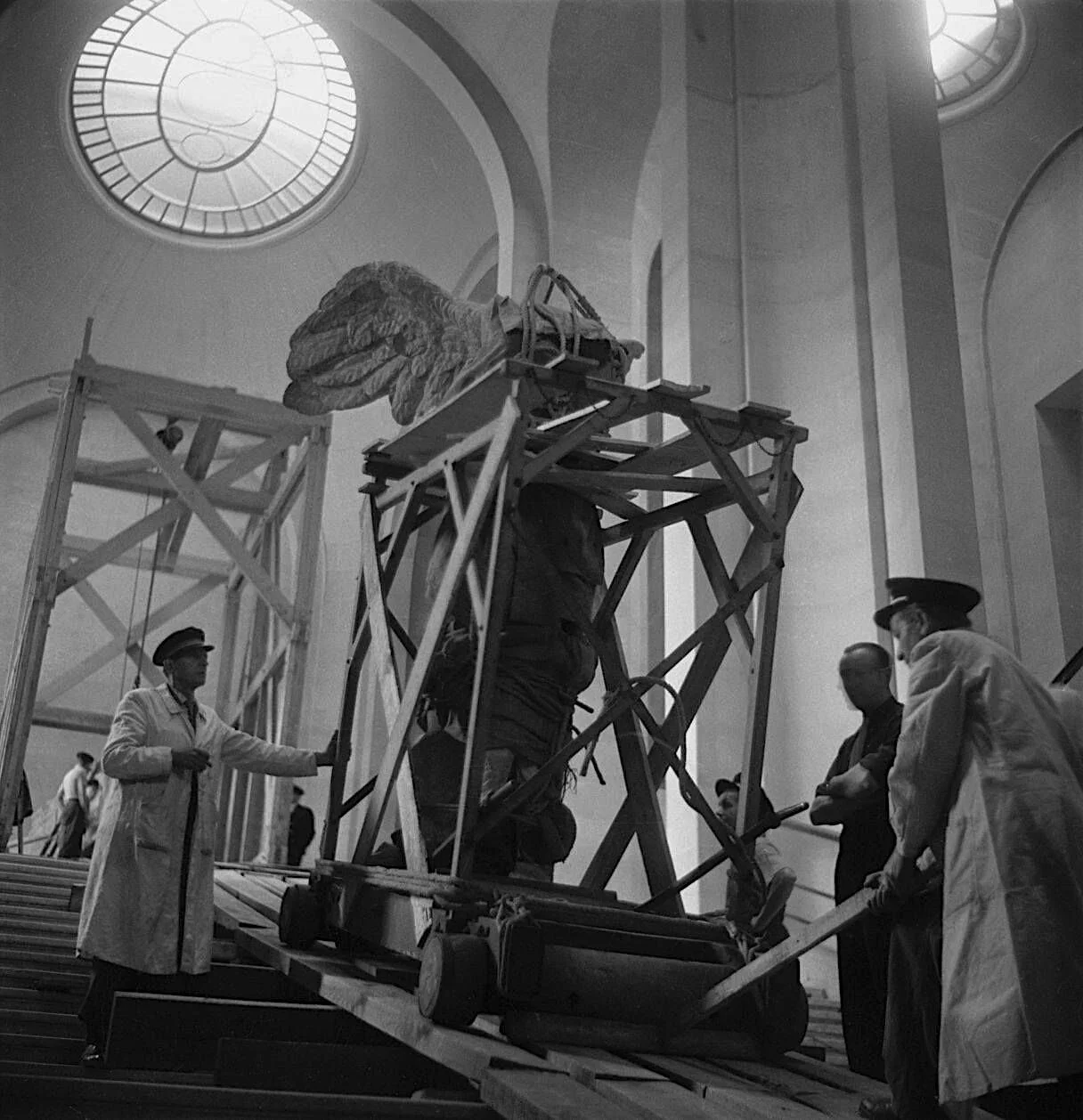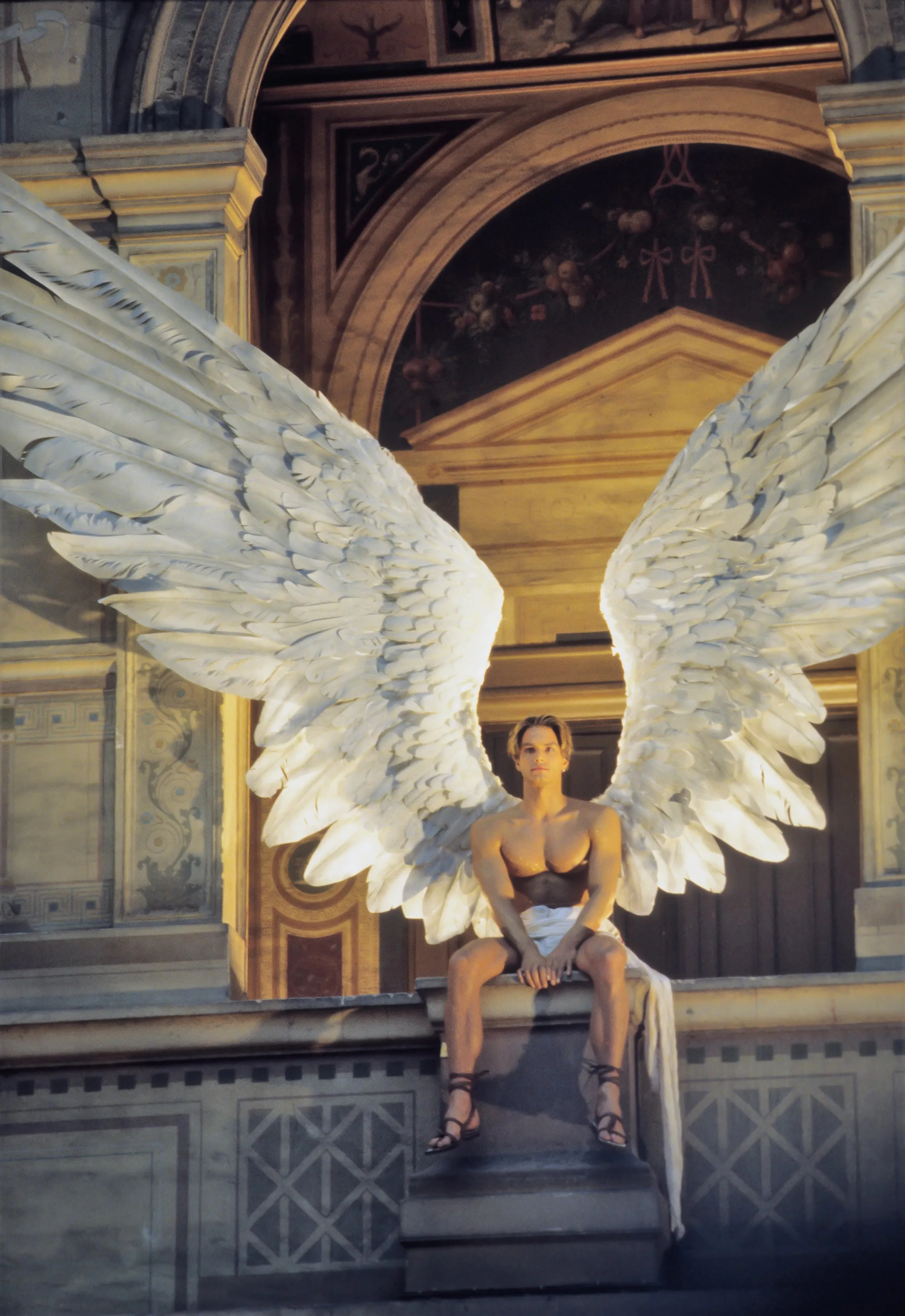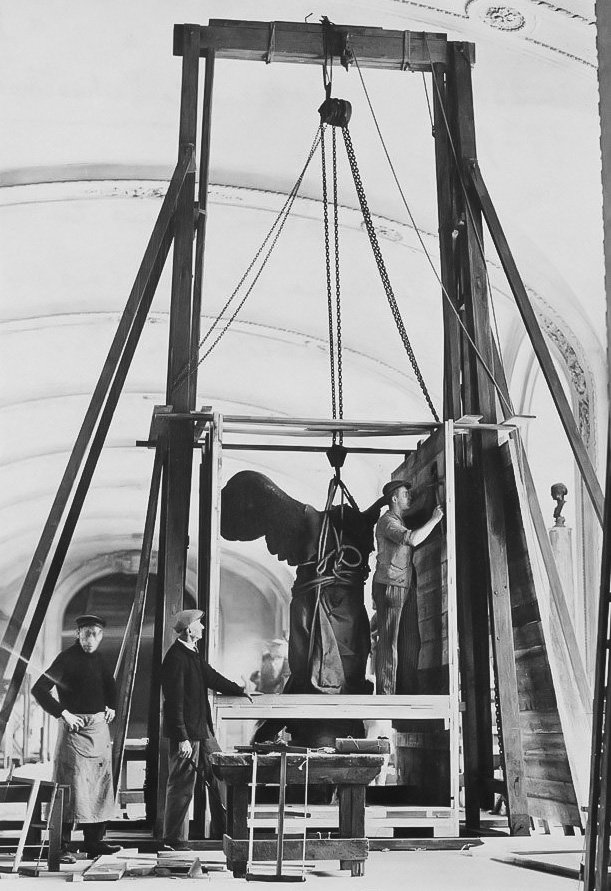WINGED VICTORY
How Alexander McQueen’s feathered and silk-clad models from his Spring 1997 Givenchy Couture debut collection resembled the Louvre’s Winged Victory of Samothrace… Often described as "the greatest masterpiece of Hellenistic sculpture,” the statue was the last of the Louvre’s masterpieces to leave the museum and rushed to safety at the beginning of WWII, to avoid the danger of falling into the hands of Hitler’s forces. Ultimately, The Winged Victory, also called the Nike of Samothrace, once again had air beneath its wings as it made its way back to its perch at the Louvre. Just as the monumental statue was given a breath of new life at the end of the war when it was set free from the roped constraints of its last chapter, so too was the House of Givenchy with the young and rebellious McQueen at its helm. With Galliano at Dior and McQueen at Givenchy, the Spring 1997 season marked a turning point for couture.
The Winged Victory of Samothrace is a marble Hellenistic sculpture of Nike, the Greek goddess of victory, that was created in about the 2nd century BC. Since 1884, it has been prominently displayed at the Louvre and is one of the most celebrated sculptures in the world… It was created not only to honor the goddess, Nike, but most likely to commemorate a naval achievement. It conveys a sense of action and triumph through its artfully flowing drapery, as though the goddess was descending to alight upon the prow of a ship. The fabric of her chitōn is pressed against her body as if wet with humid air, yet at the same time some drapery sways in rolling folds behind her… In the Autumn of 1939, the Winged Victory was removed from the Louvre in anticipation of the outbreak of World War II. All the museums of Paris were closed and artwork and objects were packed for removal to locations outside Paris for safekeeping. On the night of September 3, the statue descended the staircase on a wooden ramp which was constructed across the steps. During the years of World War II, the statue was sheltered in safety in the Château de Valençay along with the Venus de Milo and Michelangelo's Slaves. • All runway images courtesy of Vogue
Securing "The Winged Victory of Samothrace" at the Louvre • November 12, 1939 • Image courtesy of The New York Times
Return of "The Winged Victory of Samothrace" to the Louvre after WWII
Fortifying "The Winged Victory of Samothrace" for it’s journey to safety • 1939
Preparing "The Winged Victory of Samothrace" for embarkation • 1939 • Image by Roger Viollet

